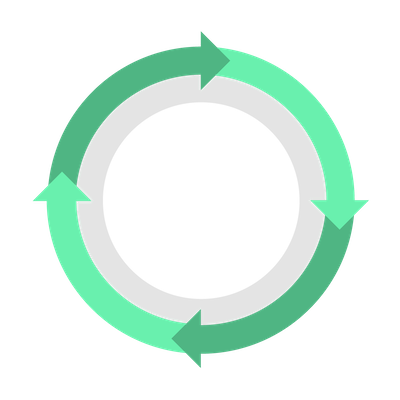Lean marketing
Lean marketing as a framework enables business-driven and objective-based marketing. It is based on eliminating waste, continuous learning from your audience, focusing on things that work, and cutting those that don’t.
Why lean marketing?
Lean marketing challenges the whole company’s existing operating models to be better, more efficient, and profitable. By minimizing waste and maximizing profitability, everyone can focus on the essential core operations as frictionlessly as possible.
Lean mindset creates the basis for all marketing efforts and enables the execution of diverse strategies, frameworks and tactics. Each marketing measure, such as a choice of channel or ad content, must be planned in line with the business objectives.
Lean marketing objectives
- + Constantly evolving processes and results
- + Quickly learning from you audience in different stages of the customer acquisition funnel
- + Reducing waste of money and other resources
- + Maximizing revenue and perceived end customer value
- + Scaling and mass customization of the production and results through different channels
- + Completely business-driven marketing
How does lean marketing work?
The framework we have developed starts from the business objective level, and efforts are refined down to the content level. The business’s key performance indicators (KPI) are split up to cover all the different levels of marketing.
When the planning phase has been completed and marketing operations are up and running, learning from customers and your audiences’ behaviour indicates what’s working and what’s not. These learnings are then taken to the higher levels of the model and eventually guide the whole business in the long run.
The phases of lean marketing
1. Planning (and development)
High-quality planning consists of customer understanding and finding the proper channels and content for the testing process. The following test rounds focus more on working on the learnings found in the analysis phase.
2. Execution
Implementing, optimizing, and finessing marketing efforts take place in the execution phase. It is crucial to measure the progress, enabling agile micro-level learning on what works and what doesn’t.
3. Measurement
Measuring gives a numeric view of the success. It’s meant to find differences and enable learnings from lower levels to be implemented upwards on the lean marketing framework.
4. Analysis
The analysis is meant to bring learnings for future development, taking all aspects of business into account, not only marketing. The results are then taken into the planning phase to boost further development and restart the process.
From micro-level lessons to macro-level decisions
The continuous lean marketing processes (phases 1–4) take place on each step of the lean marketing framework, from the business objective level down to a single piece of content, such as a single ad. Process flowthrough time varies from a few days to a year or even more on the upper levels. Micro learning happens rapidly on the lower levels, while macro learning occurs on the upper strategic levels.
What industries is lean marketing suited for?
Lean marketing can be implemented regardless of the industry. We have used it for both B2B and B2C businesses, all the way from the maritime sector to FMCG industries.
See cases